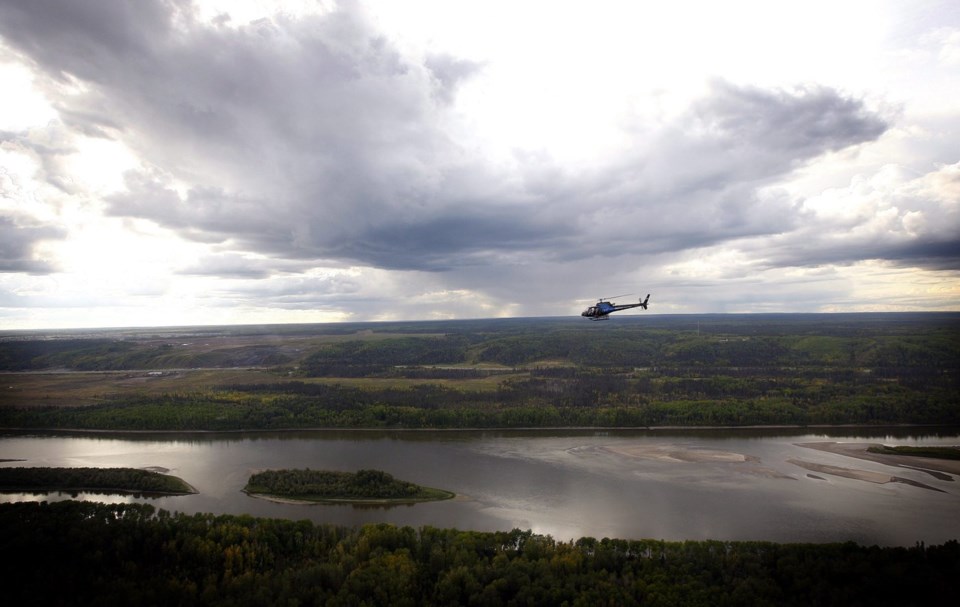OTTAWA — More than three decades after Indigenous leaders in northern Alberta began asking for funding to better understand if pollution from the oilsands was making their people sick, the federal government is funding a study to do just that.
"This should have been done 32 years ago, maybe 40 years ago," said Mikisew Cree First Nation Chief Billy-Joe Tuccaro. "We know that there is something going on in this community. We can't pinpoint it or anything in regards to what's actually going on."
Studies have previously shown higher rates of cancers in the communities along the shores of Lake Athabasca. The lake is fed by the Athabasca River, which runs through the region where most of Canada's oilsands mines are located. In 2009 an Alberta Health study identified a potential problem but said more investigation was needed and could not pinpoint a cause.
Other studies have found unsafe levels of arsenic, mercury and hydrocarbons in the area's water, as well as in its fish, sediments and surrounding wildlife.
Environment Minister Steven Guilbeault visited the region this week where leaders from the Athabasca Chipewyan First Nation, Mikisew Cree First Nation and the Fort Chipewyan MĂ©tis Nation gave him a tour of their lands and identified some of their concerns.
Guilbeault said in a virtual news conference Tuesday evening that the study, which will be funded with $12 million over the decade, will trace potential contaminants from oilsands operations to better understand the long-term health and environmental impacts.
"I've heard loud and clear community members need to know what impacts of living downstream from the oilsands means for them," he said.
"I've heard stories of health troubles, very high cancer rates, a concern about contaminants in the water, and since the Kearl mine those concerns have been exacerbated."
Guilbeault referred to news 18 months ago that the tailings ponds from Kearl's oilsands mine near Fort McMurray, Alta., had been seeping into the groundwater for months. The ponds contain toxic chemicals including mercury, benzene and arsenic. That news was delivered only after another leak was discovered at a Kearl containment pond, though the company says most of that leak was captured before it caused any damage.
Documents later filed by Imperial Oil showed seepage from the tailings ponds was anticipated when they were designed, and that it had been documented for years.
In a written statement Wednesday, Imperial spokeswoman Christine Randall said the company both supports and will participate in the study "to improve understanding and build confidence in our communities regarding our industry."
"Imperial regrets the incidents that occurred at its Kearl oilsands facility in 2023," Randall said. "The mitigation measures put in place are working and all monitoring data continues to demonstrate no indication of adverse impacts to local wildlife or fish populations in nearby river systems, and no risks to drinking water for local communities."
In an update published Wednesday, the company said it has taken more steps to control seepage from the Kearl site, including more stringent monitoring north of the mine's boundary area. It says it has detected shallow groundwater above screening guidelines 150 metres from the boundary, and in deeper groundwater, about one kilometre north. Information has been shared with the communities, the company said.
It said since February 2023, the company has tripled the number of pumping and monitoring wells to address seepage, with more than 800 monitoring wells now in operation.
Kendrick Cardinal, president of the Fort Chipewyan MĂ©tis Nation, said Tuesday that funding for the new study "speaks volumes" about a commitment by the federal government to reconciliation.
"It's important we hold industry accountable for what's happening in our community," Cardinal said. "They've created a different lifestyle here. Things have changed dramatically."
Cardinal said the way nature works, it will be 10 years before the true impact of the Kearl spill is known. And he said the study is needed because the Kearl's incident is just one event.
"So just to keep that in mind, we can't keep pointing fingers at one component," he said. "There is multiple engines running here and there are engines that were long operating before Imperial came. Until we truly find out what is the cause, only then we would be able to address those issues. But until then this is a step forward."
While the 10-year time frame for the study is lengthy, Guilbeault said there is already work underway to better regulate releases from oilsands and a Crown-Indigenous working group is investigating what to do with existing tailings ponds.
"I've said many times publicly that there can be no new licenses for tailing ponds issues until we find solutions to the existing tailing ponds that we have," Guilbeault said.
As to what would happen if the study finds the oilsands are impacting the health of the community, the government would have to act further.
Guilbeault said he would hope the province and the companies would then work with the federal government "to put in place even more stringent measures from an environmental and health point of point of view."
"I think that that would be the only reasonable course of action," he said.
This report by The Canadian Press was first published Aug. 7, 2024.
Mia Rabson, The Canadian Press




